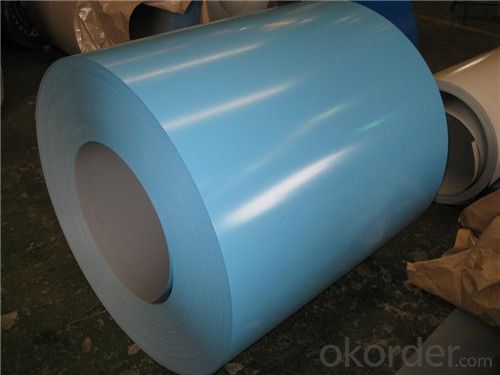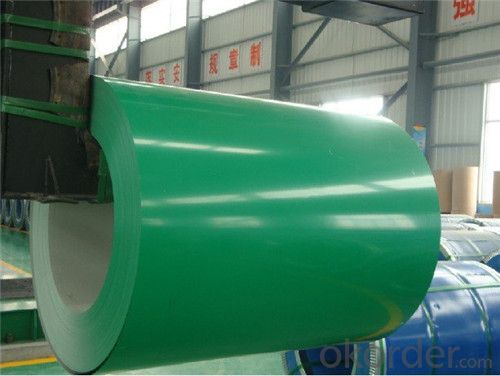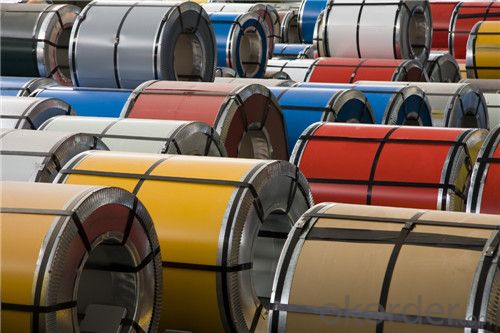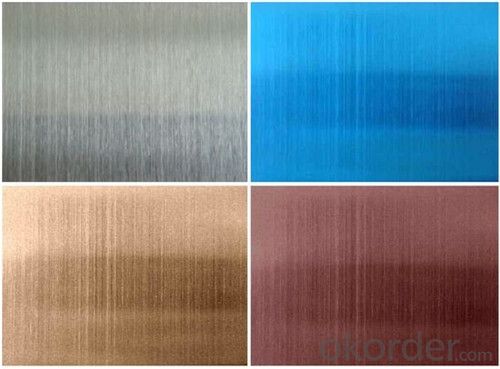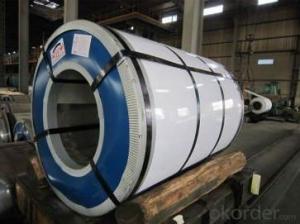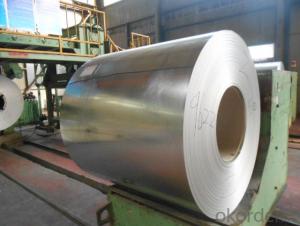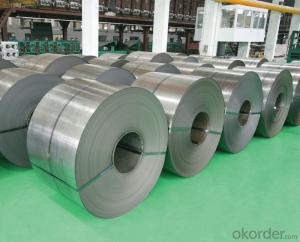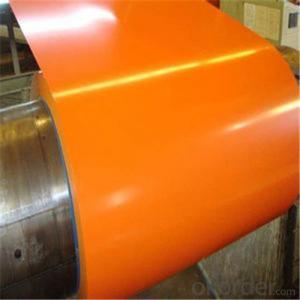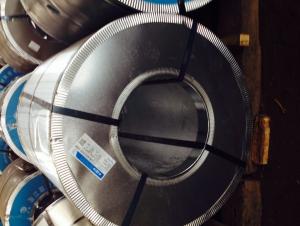color Coated Galvanized Cold Rolled steel coil
- Loading Port:
- Tianjin
- Payment Terms:
- TT OR LC
- Min Order Qty:
- 25 m.t.
- Supply Capability:
- 30000 m.t./month
OKorder Service Pledge
OKorder Financial Service
You Might Also Like
Product Description
NAME:
Prepainted Steel Coil\Colour Coated Coil\Coil coated steel\PPGI
SIZE:
Thickness: 0.18-1.50mm
Width: 10mm-1500mm(STD914mm,1000mm, 1200mm, 1219mm, 1250mm, 1500mm)
Thickness tolerance: +/-0.05 mm
Width tolerance: -2.0/5.0mm
ZINC, PAINT & COLOR:
Zinc coating: 60-275G/M2
Paint thickness: Top 15-25um + Back 5-10um
Paint: Epoxy Polyester, silicon modified polyesters, polyvinylidene fluoride, high-durability polyester
Color: As the RAL color standard or customer's sample
STANDARD:
JIS G 3312, ASTM A755, EN10169,GB/T2518
Base sheet: Galvanized steel coils\ Galvalume steel, such as SGCC, CGCC, DX51D+Z, Q195,etc
Quality: CQ DQ
Lifespan: 10-15 years
APPLICATION:
Outdoor: Roof\ Roof structure\Surface sheet of balcony\ Frame of window\Door\Door of garage\Roller shutter door\Booth\Persian blinds\Cabana\Refrigerated wagon and so on.
Indoor: Door\Isolater\Frame of door\Light steel structure of house\Sliding door\Folding screen\Ceiling\ Internal decoration of toilet and elevator.
Building accessories: Window panels, signboards
Home appliances: Oil/gas boilers, rice buckets, portable gas burners, etc.
| Commodity : | High Quality PrePainted Galvanized Steel Coil |
| Materials Grade: | SGCC ,CGCC ,DX51D+Z ,SGLCC |
| Thickness : | 0.17-1.2mm |
| Width : | 914mm,1219mm,1000mm,1220mm,1250mm ( can cut to strip above 30mm width ) |
| Zinc coating : | 60-275g/sqm |
| Surface Structure: | Galvanized Or Aluzinc |
| Color : | RAL No. or Sample color |
| Painting : | Top : 5micron primer +15-20microns polyester Back : 5-8microns primer epoxy |
| Coil Weight : | 2-6mts |
| Payment term : | TT ,L/C AT SIGHT , USANCE L/C ,D/P |
| Shipment : | 20 feet container or bulk ship |
| Remark : | We accept the third-party inspection ,such as SGS , INSPECTORATE ,CIQ |
- Q: How are steel coils used in the manufacturing of household appliances?
- Steel coils are used in the manufacturing of household appliances as they are shaped, cut, and formed into various parts such as panels, frames, and components. These coils provide strength, durability, and structural integrity to appliances like refrigerators, ovens, and washing machines, ensuring their stability and longevity.
- Q: Can steel coils be coated with anti-fingerprint materials?
- Yes, steel coils can be coated with anti-fingerprint materials. These coatings are designed to minimize fingerprint smudging and make the surface easier to clean, improving the appearance and functionality of the steel coils.
- Q: How are steel coils used in the production of food processing equipment?
- Steel coils are used in the production of food processing equipment as they are shaped and formed into various components such as frames, supports, and panels. These coils provide strength, durability, and stability to the equipment, ensuring its reliability and longevity in the demanding food processing environment.
- Q: What are the different types of steel coil edge finishes?
- There are several types of steel coil edge finishes, including mill edge, slit edge, and sheared edge. Mill edge refers to the natural, untreated edge of the steel coil as it comes from the mill. Slit edge is created when the coil is slit into narrower widths, resulting in a smooth, burr-free edge. Sheared edge is produced when the coil is cut using mechanical shearing, resulting in a slightly rougher edge compared to slit edge.
- Q: I want to buy a VERY sturdy bunkbed, but don't know which one would be better with not getting loose or falling apart.
- Metal/Steel. :)
- Q: Can steel coils be used in architectural applications?
- Yes, steel coils can be used in architectural applications. Steel coils are commonly used in the construction industry due to their strength, durability, and versatility. They can be shaped, formed, and fabricated into various architectural components such as roofs, walls, facades, and structural elements. Additionally, steel coils can be coated or painted to enhance their aesthetic appeal and protect them from corrosion, making them a popular choice in architectural designs.
- Q: What are the factors that affect the price of steel coils?
- There are several factors that can affect the price of steel coils. These include the cost of raw materials, such as iron ore and coal, which are used in the production of steel. Fluctuations in these commodity prices can have a direct impact on the price of steel coils. Other factors include supply and demand dynamics, changes in production capacity, transportation costs, and global economic conditions. Additionally, factors like trade policies, tariffs, and currency exchange rates can also influence the price of steel coils.
- Q: What are the safety regulations for steel coil production facilities?
- The safety regulations for steel coil production facilities typically include measures such as proper training and certification for employees, regular equipment inspections and maintenance, use of personal protective equipment, implementation of fire prevention and evacuation plans, adherence to hazardous material handling protocols, and compliance with occupational health and safety standards. These regulations aim to minimize the risk of accidents, injuries, and environmental hazards within the facility.
- Q: The steel is orangish in colour and is mostly made of copper
- Steel is an alloy of iron and carbon and optionally one or more of numerous other materials. Copper is normally not used, except sometimes in small percentages. Steel is never yellow or orange in color. Reactivity of steel depends on the materials it is alloyed with. Chromium and nickel with steel make stainless steel, which is much less prone to reactive than iron. .
- Q: Just two sentences on a detailed description on what the steel industry is
- The steel industry is an industry that produces steel. It is one of the largest industries in the world, with China as the leading steel producer
Send your message to us
color Coated Galvanized Cold Rolled steel coil
- Loading Port:
- Tianjin
- Payment Terms:
- TT OR LC
- Min Order Qty:
- 25 m.t.
- Supply Capability:
- 30000 m.t./month
OKorder Service Pledge
OKorder Financial Service
Similar products
Hot products
Hot Searches
Related keywords




